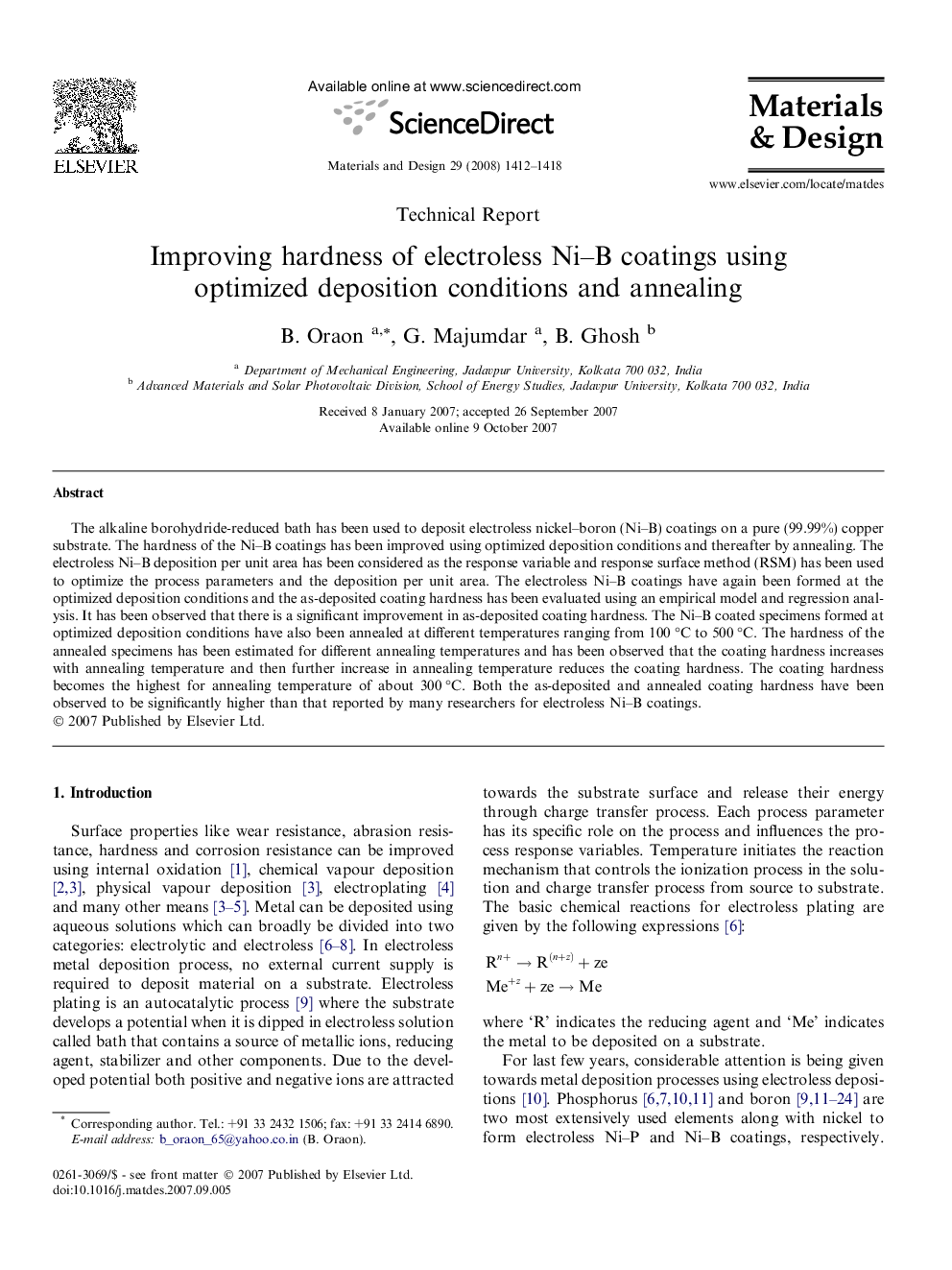| Article ID | Journal | Published Year | Pages | File Type |
|---|---|---|---|---|
| 833214 | Materials & Design (1980-2015) | 2008 | 7 Pages |
The alkaline borohydride-reduced bath has been used to deposit electroless nickel–boron (Ni–B) coatings on a pure (99.99%) copper substrate. The hardness of the Ni–B coatings has been improved using optimized deposition conditions and thereafter by annealing. The electroless Ni–B deposition per unit area has been considered as the response variable and response surface method (RSM) has been used to optimize the process parameters and the deposition per unit area. The electroless Ni–B coatings have again been formed at the optimized deposition conditions and the as-deposited coating hardness has been evaluated using an empirical model and regression analysis. It has been observed that there is a significant improvement in as-deposited coating hardness. The Ni–B coated specimens formed at optimized deposition conditions have also been annealed at different temperatures ranging from 100 °C to 500 °C. The hardness of the annealed specimens has been estimated for different annealing temperatures and has been observed that the coating hardness increases with annealing temperature and then further increase in annealing temperature reduces the coating hardness. The coating hardness becomes the highest for annealing temperature of about 300 °C. Both the as-deposited and annealed coating hardness have been observed to be significantly higher than that reported by many researchers for electroless Ni–B coatings.
